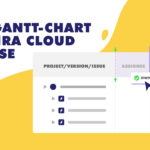The 80/20 rule – also known as the Pareto Principle – states that 20% of inputs give rise to 80% of outputs. Initially theorized by the Italian economist, Vilfredo Pareto, who noted that about 80% of the land in Italy was owned by 20% of the people, this observation can now be applied in many situations.
For example, 20% of business sales can deliver 80% of business profits, or 20% of marketing efforts may drive 80% of campaign results. Regardless of the situation, this rule can be used as a tool to discover and improve the areas that bring the most value.
One of its best uses is in project management. Project managers like yourself can identify and improve the critical aspects of project management that will bring the most tangible business returns.
Continue reading to learn how you can apply the 80/20 rule to increase productivity in project management.
Getting Communication Right for Fruitful Project Activities
20% of communication will lead to 80% of project activities.
First, get your communication right, as it sets the pace for most of your project activities. Ensure that all project-related information efficiently reaches your team members so that they can do their best work.
Use a Communication Plan to Manage Information
It’s common to use multiple platforms – about 91% of businesses use at least two messaging apps – to share information and collaborate on projects. But more platforms don’t mean more productive project management. In fact, it’s the opposite.
So, make use of a communication plan to manage project information. This way, you can efficiently disseminate the right project information to the right people at the right time. A communication plan should consist of the goal, medium, frequency, and audience. Here’s an example of a detailed communication plan:
-
Goal: Get daily updates from the team to identify project status and potential blockers
-
Medium: Slack
-
Frequency: Every morning
-
Audience: Team members
Communicate Project Information in Batches
Unless you’re managing an urgent project, you don’t have to fire off updates as soon as they pop into your head or as you get them. An efficient way to go about this is by conveying information in batches, as long as you’re following the communication plan.
For example, create a shared knowledge base (hint: Confluence) to consolidate relevant project updates. Next, be sure to share it only with relevant team members periodically. You’ll spend less time sharing information, and your teammates will spend less time sorting through project “spam.”
Prioritizing Impactful Projects for Rewarding Business Results
20% of projects will bring 80% of business wins.
The key is to find out which projects matter more and focus on them instead of trying to juggle all projects. However, if most of your projects have equal importance and urgency, portfolio project management can do the trick. Most organizations with tons of projects also have a dedicated department – Project Management Office (PMO) – that handles this.
Focus on Your Most Valuable Clients
Wondering which projects you should prioritize? The answer lies in your clients (if your business relies on client work). We all have that one (or hopefully, more) client that brings the big wins in terms of portfolio and results. When prioritizing your projects for team execution, focus on these clients first before you select others.
If Not Clients, Then Focus on Project Value
But what happens when your business doesn’t rely on clients? That’s when you should focus on project value instead. Prioritize the impactful ones first.
New app version release with bug fixes? Yes, that’s important. Upgrading your company’s payroll system for HR? That can wait. Make use of tools like the Value-Complexity Matrix to plan and prioritize the 20% of projects that can bring in bigger and better wins for your company.
For more proven strategies to manage multiple project expectations and prioritization, check out our Pro Guide to Managing Multiple Projects.
Efficiently Managing Time for High-Quality Work
20% of tasks will account for 80% of project results.
Time waits for no man (and no project). So, effectively work on tasks that will greatly influence the quality of your projects.
Spend More Time on High-Value Tasks
Whether you’re replying to emails or editing project proposals, be sure to spend more time on high-value tasks that will positively accelerate progress and enhance project results. This also means prioritizing tasks that can potentially become blockers for others if not completed on time.
For example, when you create a well-detailed project brief, your team members will have adequate information to start working without a hitch. You’ll also spend less time reviewing their tasks (and potential errors) later on. Tools like Gantt charts can help to visualize how these high-value tasks are dependent on each other for a good flow of work.
Leverage Your Productivity “Peak Hour”
Our productivity ebbs and flows as the day passes. But we all have that time when productivity peaks. For some, it’s at five in the morning, while others are very productive in the afternoon. The point is to guard your productivity ”peak hour” and use it solely for getting the most important work (e.g., writing up a new project proposal) done.
While you’re at it, don’t forget to limit distractions (e.g., Slack notifications, noisy environment) too. Not only that, to further put you in the zone, declutter your space so that important things (e.g., office supplies) are within reach and work is well organized.
Managing Resources for Well-Executed Projects
20% of resources will contribute to 80% of the work.
Where will your projects be without resources? Remain unexecuted, we presume. Anyway, it’s important that you identify the top 20% of resources (e.g. team members, software, equipment) and make sure that these resources are made available to tackle the most valuable projects.
Allocate Resources for the Important Projects
Since resources are not limitless, it all boils down to allocating them in a manner that supports an organization’s strategic goals. This means avoiding stockpiling resources unnecessarily and focusing on getting the best ROI from them.
Not only are Gantt charts a powerful planning tool, but they can also be used for resource management. The granularity of task breakdowns as well as priorities makes it easier to allocate resources. You can easily identify overcommitted resources and adjust accordingly. So you can effectively coordinate work without overwhelming your team members.
For example, your most experienced full-stack developer is overcommitted because everyone requires his expertise for all development work. Based on the project schedule, it seems like he’s both your critical resource and your biggest constraint. Look for tasks that can be routed to other engineers in your team and keep a fixed maximum work-in-progress limit for your main developer.
Achieve More Productivity with Less
Remember that the 80/20 rule is just an observation, not a gold standard for measuring productivity and the state of your projects.
Stay tuned for more great insights on how to work better as well as to efficiently manage projects and teams.


